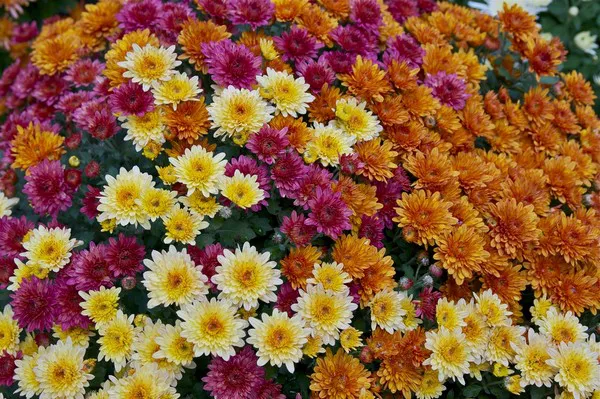Bumblebees, among the most vital pollinators in ecosystems worldwide, play a crucial role in the reproduction of many flowering plants. As they flit from bloom to bloom, they transfer pollen, facilitating fertilization and the production of fruits and seeds. Understanding their floral preferences is essential for maintaining healthy ecosystems and agricultural productivity. In this article, we delve into the intricacies of what flowers bumblebees prefer and why, shedding light on the fascinating relationship between these insects and the floral world.
The Importance of Bumblebees:
Before delving into their floral preferences, it’s essential to grasp why bumblebees matter. These fuzzy insects are efficient and effective pollinators, thanks to their unique characteristics. Unlike honeybees, which are known for their sophisticated social structures, bumblebees are solitary or form small colonies. This independence allows them to forage over a wide range, increasing their potential impact on pollination.
Moreover, bumblebees exhibit a behavior called buzz pollination, where they sonicate flowers by vibrating their flight muscles at specific frequencies. This technique is particularly useful for releasing pollen from certain flowers, making bumblebees indispensable for plants with such characteristics.
Given their importance, understanding the flowers they prefer can aid conservation efforts, enhance agricultural practices, and promote biodiversity.
Factors Influencing Bumblebee Flower Preferences:
Bumblebees’ floral preferences are influenced by various factors, including flower morphology, color, scent, nectar production, and nutritional content. Here’s a closer look at how each factor shapes their choices:
1. Flower Morphology:
Bumblebees have adapted to different flower shapes and sizes, depending on their tongue length and body size. Flowers with open, accessible structures are generally preferred, as they allow easy access to nectar and pollen. However, some bumblebee species have longer tongues, enabling them to reach deep into tubular flowers that other insects may not access easily.
2. Color:
Bumblebees are attracted to a wide range of colors, particularly those in the ultraviolet spectrum that are invisible to humans. While they are known to favor blue, violet, and yellow flowers, their preferences may vary among species. Flower color acts as a visual cue, guiding bumblebees to potential food sources.
3. Scent:
Fragrance plays a crucial role in attracting bumblebees to flowers. Many flowers emit distinct scents to signal the presence of nectar, guiding bumblebees to the reward. Some studies suggest that bumblebees may have preferences for specific floral scents, although further research is needed to elucidate these preferences fully.
4. Nectar Production:
Nectar serves as the primary reward for bumblebees visiting flowers. Flowers with high nectar volumes or concentrations are typically more attractive to bumblebees, as they provide ample energy for foraging. However, bumblebees may also visit flowers with lower nectar rewards if other factors, such as flower abundance or proximity, are favorable.
5. Nutritional Content:
Bumblebees require a balanced diet to support their energy needs and reproductive success. Therefore, they may prefer flowers with higher nutritional content, such as those rich in sugars, amino acids, and vitamins. Some flowers offer additional benefits, such as pollen, which provides essential proteins for bumblebee larvae.
Precise Answer: Which Flowers Do Bumblebees Like?
After considering the various factors influencing bumblebee flower preferences, it’s clear that no single type of flower suits all bumblebee species. Instead, their preferences are shaped by a combination of factors, including flower morphology, color, scent, nectar production, and nutritional content.
However, certain plant families and species consistently attract bumblebees due to their characteristics. Some examples include:
1. Lamiaceae (Mint Family):
Plants in the mint family, such as lavender (Lavandula spp.), sage (Salvia spp.), and thyme (Thymus spp.), are popular among bumblebees. These flowers typically have tubular shapes with landing platforms, making them accessible to a wide range of bumblebee species. Additionally, they produce abundant nectar and often emit fragrant scents that attract pollinators.
2. Asteraceae (Daisy Family):
Flowers in the daisy family, including sunflowers (Helianthus spp.) and asters (Aster spp.), are attractive to bumblebees due to their bright colors and plentiful nectar. The composite flower structure provides a platform for bumblebees to land and access nectar easily. Additionally, these flowers bloom in abundance, offering a consistent food source for foraging bees.
3. Fabaceae (Pea Family):
Plants in the pea family, such as clover (Trifolium spp.) and alfalfa (Medicago spp.), are valued by bumblebees for their high nectar content and protein-rich pollen. These leguminous flowers have distinctive shapes that facilitate pollination by bumblebees. Clover, in particular, is a common forage plant for many bumblebee species, providing essential nutrition throughout the growing season.
4. Ericaceae (Heath Family):
Flowers in the heath family, such as blueberries (Vaccinium spp.) and rhododendrons (Rhododendron spp.), are popular among bumblebees for their tubular flowers and abundant nectar. Many heath family plants bloom early in the spring, providing crucial resources for bumblebee colonies emerging from hibernation. Blueberries, in particular, are vital for both wild and managed bumblebee populations due to their economic significance as a crop.
5. Rosaceae (Rose Family):
Certain flowers in the rose family, such as blackberries (Rubus spp.) and raspberries (Rubus idaeus), are highly attractive to bumblebees. These flowers offer abundant nectar and pollen rewards, essential for sustaining bumblebee colonies. Additionally, the sprawling growth habit of many rosaceous plants provides ample foraging opportunities for bumblebees.
Conclusion
Understanding which flowers bumblebees prefer is essential for promoting biodiversity, supporting pollinator populations, and ensuring the continued availability of pollination services. By planting bee-friendly flowers and creating pollinator-friendly habitats, individuals and organizations can contribute to the conservation of bumblebees and the ecosystems they inhabit.


